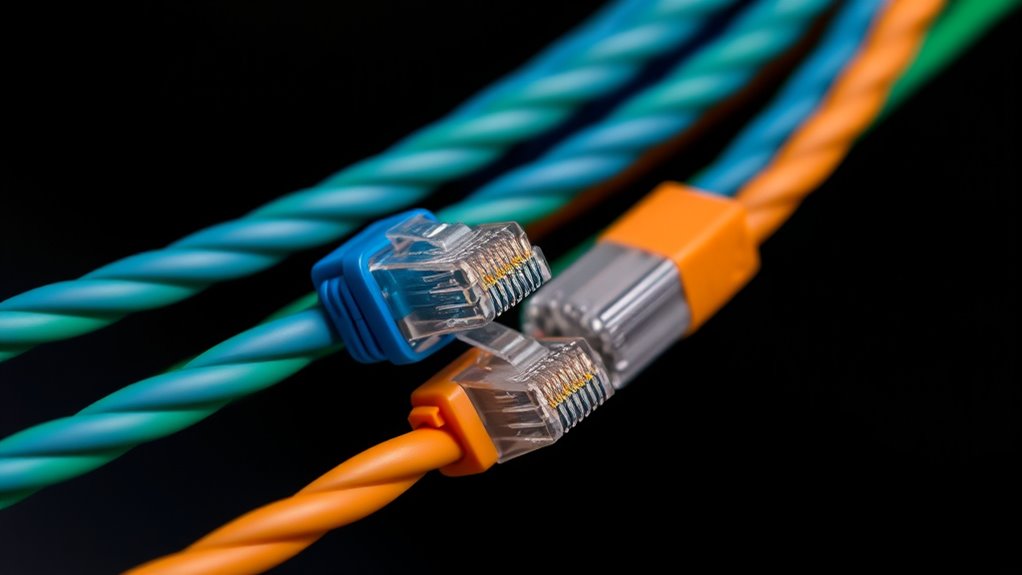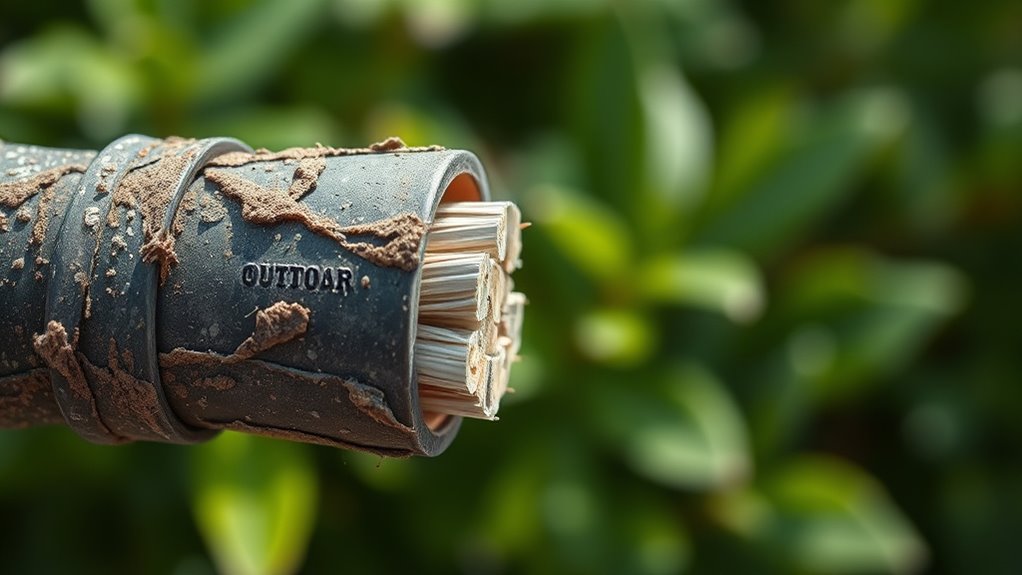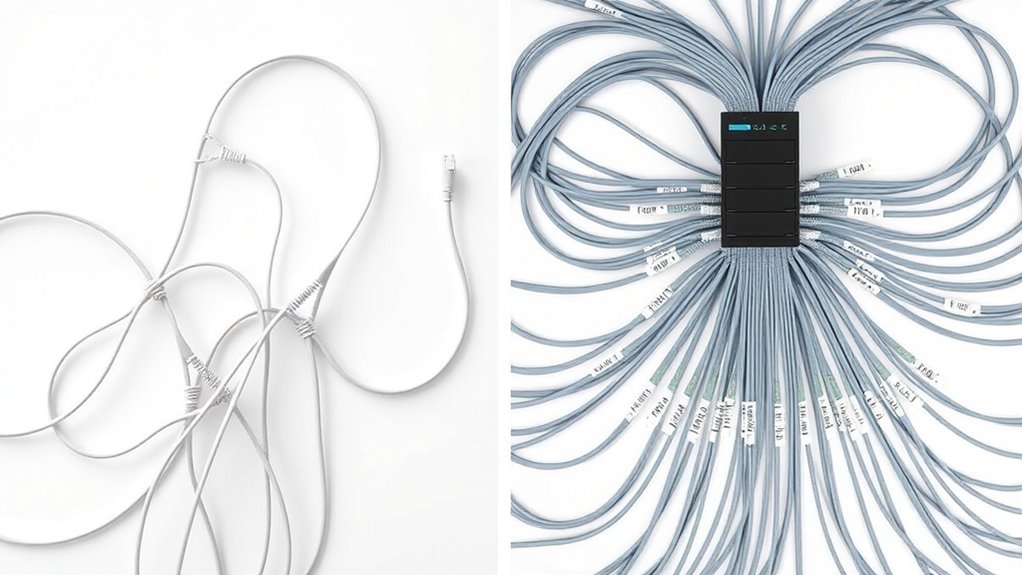Narrowing down cable crosstalk causes and solutions reveals effective methods to improve your signal quality—discover how to reduce interference today.
Browsing Category
Cabling Basics
20 posts
Understanding Cable Insulation Materials (PE, FEP, PVC)
With so many cable insulation options like PE, FEP, and PVC, understanding their differences is essential for choosing the right material for your needs.
Advantages of Plenum‑Rated Cables in HVAC Spaces
Just how do plenum-rated cables enhance HVAC safety and performance? Discover the key advantages that make them essential.
Cable Jacket Ratings for Outdoor Use
When selecting cable jacket ratings for outdoor use, understanding their protective features is essential to ensure durability and safety.
Understanding Signal‑to‑Noise Ratio in Data Transmission
Understanding Signal-to-Noise Ratio in Data Transmission reveals how clearer communication is achieved and why mastering these concepts is essential for reliable data transfer.
Choosing Between Single‑Ended and Double‑Ended Cables
When choosing between single-ended and double-ended cables, weighing environmental factors and distance can determine which option ensures optimal signal quality and reliability.
Topology Design: Daisy Chain Vs Home Run Cabling
Understanding the differences between daisy chain and home run cabling is crucial for optimal network design and reliability; continue reading to discover which setup suits your needs best.
Using Patch Cords: Length and Performance Considerations
Discover how patch cord length impacts performance and why proper selection is crucial for optimal network reliability and efficiency.
What Is Cable Coating? PVC Vs LSZH
Many wonder how PVC and LSZH cable coatings differ in safety and environmental impact, making it essential to understand which is best for your needs.
Cable Cross‑Over Vs Straight‑Through: When to Use Each?
Many users wonder whether to choose a crossover or straight-through cable, and understanding their differences ensures optimal network connections.













